
To be planting trees with the CEO of a major Swiss brand is not exactly an everyday occurrence. But Niels Møller and his team at Mondaine Watch invited us to a local Swiss forest to do just that.
Time is running out for humanity to stop global warming. With every season of every new year, we seem to feel the effects of climate change: more frequent and more intense rain spells, hurricane-level winds, and more extreme temperatures.
The bark beetle is one of the beneficiaries of higher average temperatures: more heat translates to an increase in beetle populations. As a result, Swiss forests, including a patch on the Pfannenstiel near Zürich, have been ravaged by the invaders.
During a pilot event that will likely be replicated in other parts of the world, Mondaine Watch has invited us to plant about 50 trees in an eroded patch of forest. Apart from reinstating the flora, the idea is that trees are important in capturing harmful CO2 from the atmosphere.
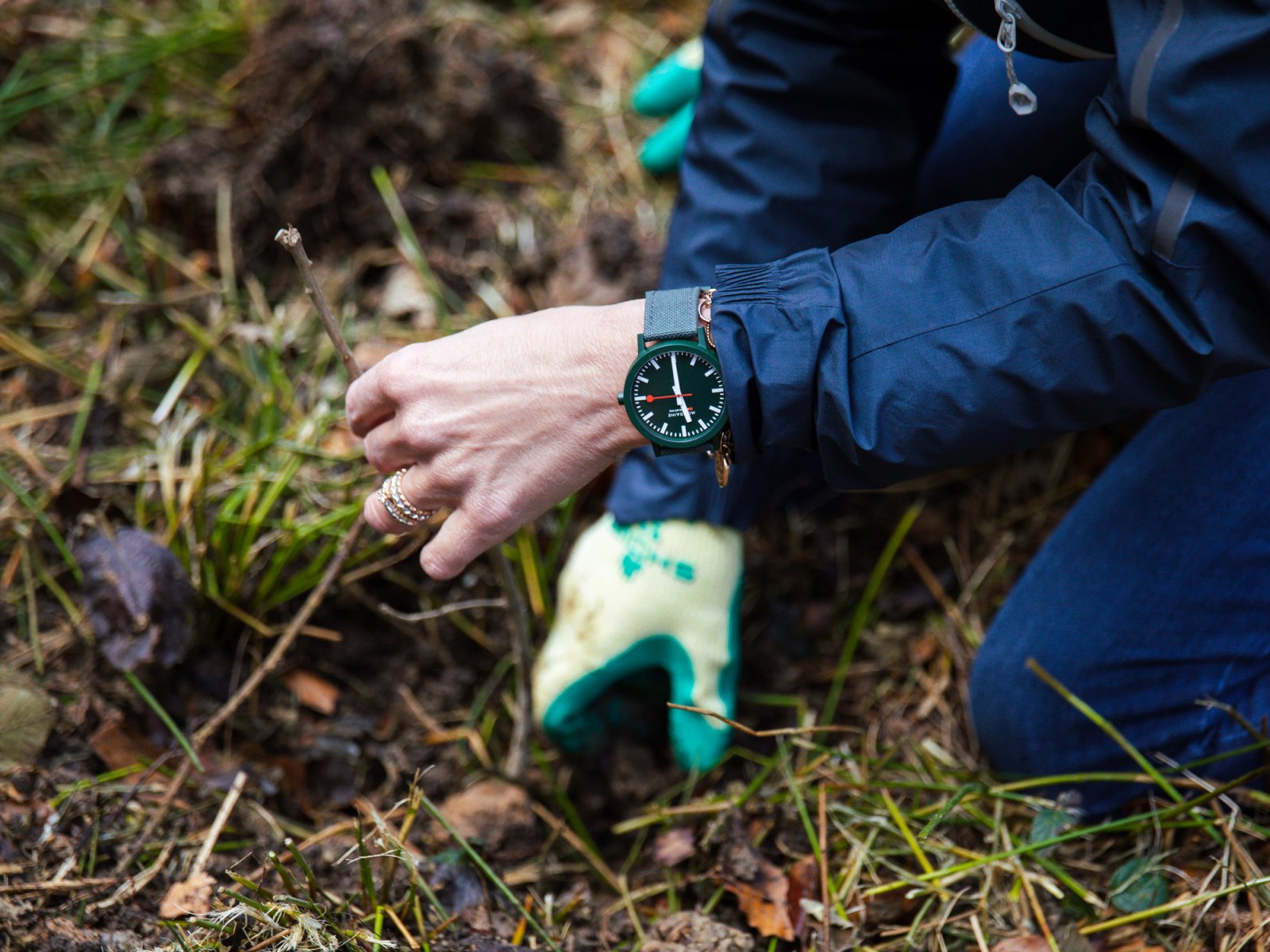
I learn that the Swiss watchmaker’s commitment to the environment is part of the corporate DNA. Before “sustainability” was even a term in our dictionaries, as one of the world‘s first watch companies, Mondaine developed the first solar-powered analog wristwatch in 1973. At the time, they were one of the world’s first watch companies to use solar energy.
In the words of Ronnie Bernheim, one of the two descendants and co-owners of Mondaine Watch: “Our parents were ahead of their time. Consumers did not understand yet what Mondaine was trying to achieve.”
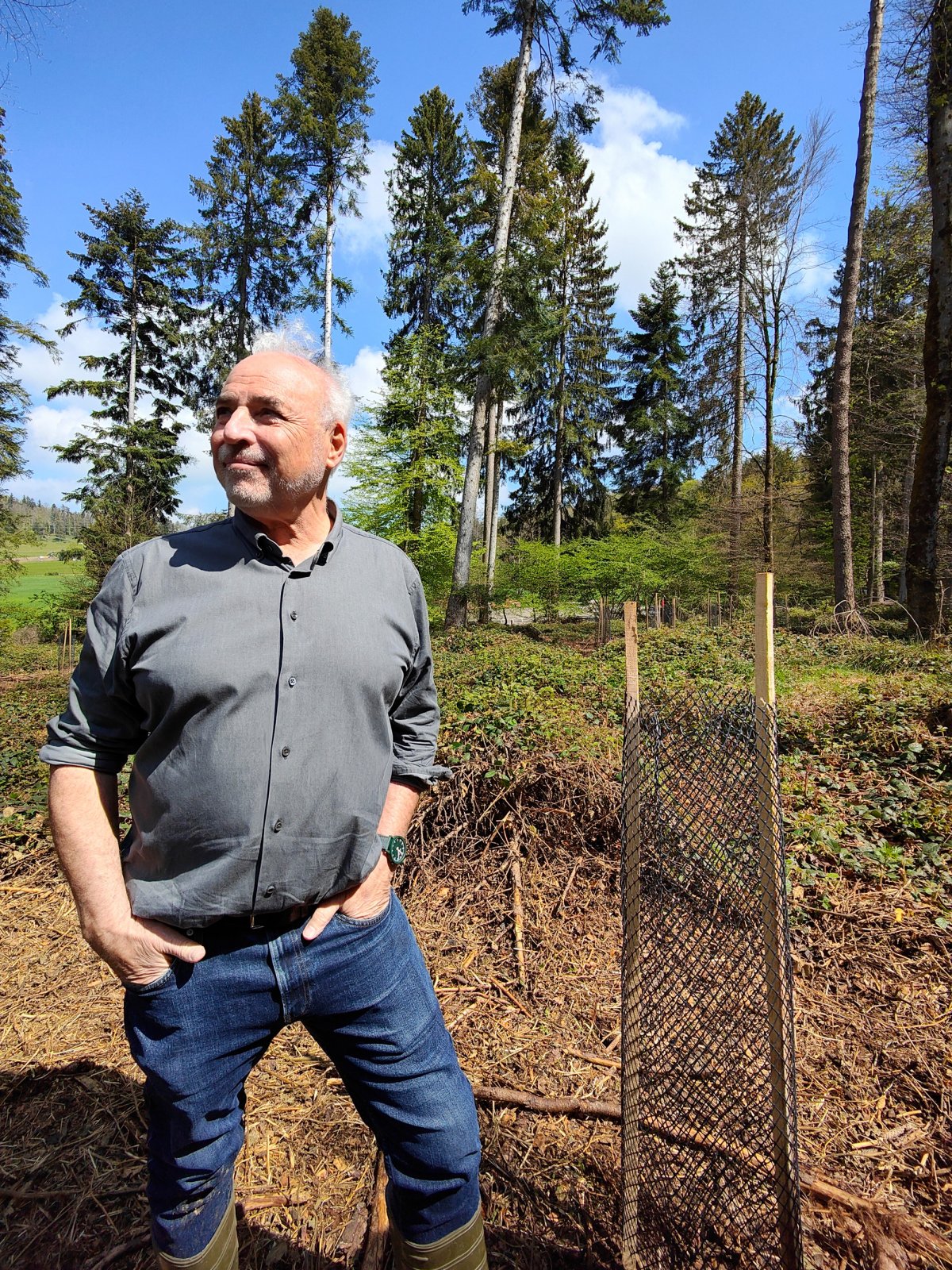
A climate-neutral Swiss watch brand
Today, some 70 years later, Mondaine Watch is the first watchmaker in the world to be entirely climate-neutral. By reducing, recycling, reusing, and compensating, the Swiss company has eliminated its carbon emissions entirely.
There is no other way of putting it, but it simply feels good to wear a Mondaine watch on my wrist. On the one hand, it’s because of the confidence that this family-owned business is serious about sustainability. As such, I know that my Mondaine watch left no ecological footprint on this planet.
But on the other hand, it’s because I have met the wonderful people behind Mondaine Watch. André and Ronald Bernheim, the brothers and co-owners, are as authentic as can be. They are dedicated to their mission, meanwhile setting the bar for sustainability higher with every year.
And the Mondaine CEO, Niels Møller, along with his Danish compatriot and brand manager, Thomas Nedergaard, is approachable and eager to share his vision for the brand’s future. Despite the constraints of the official Swiss Railways clock face, which is set in stone, they are able to move the bar ever so slightly. As a result, we will be seeing more straps in natural tones and sustainable materials in upcoming lines of Mondaine watches.
How Mondaine Watch achieves climate neutrality
☀️ Watches are produced with solar energy
While the ancient Greeks used sundials to read the time of day, Mondaine Watch has a modern-day approach to using the power of the sun. Their cutting-edge manufacturing plant in Biberist, Switzerland, is powered by solar energy.

I have previously visited the watch factory’s rooftop with views of the Jura mountain range. It is covered by photovoltaic solar panels that generate enough green energy to meet up to 80 percent of the plant’s annual needs. (The remaining energy required is supplied by a hydroelectric plant.)
If you do the math, the annual energy production of 120’000 kWh translates to 77 Metric tons of avoided CO2 emissions. This is the equivalent of the annual CO2 emissions of 18 Swiss residents. (Source: Statista)
🌊 Upcycled ocean waste
The Basel-based tide ocean company collects and recycles plastic waste in the ocean off Southeast Asia. After local fishermen pick up the plastic, the material is washed, processed, and ultimately upcycled into watch cases for special Luminox models.
Knowing about the dedication of the owners to sustainable practices, it goes without saying that Mondaine has recycled even before it was a term in our dictionaries. At both the factory and the headquarters, all kinds of materials are being collected for recycling: cardboard, paper, batteries, plastics, and production waste, including steel and electrical parts.
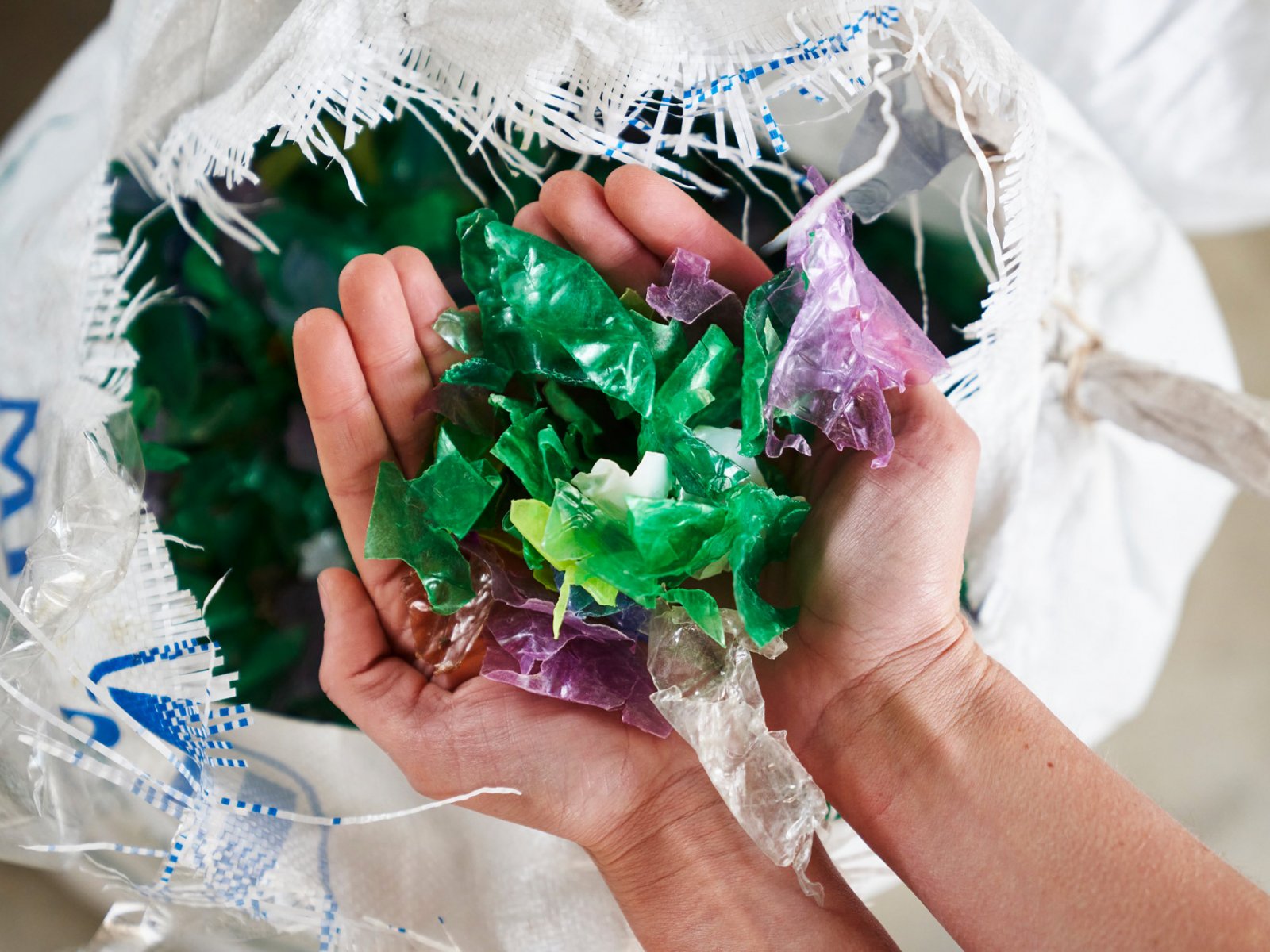
🌱 Vegan leather straps
For many years, Mondaine watch models have used recycled felt, cork, cotton, and oil derived from the castor-oil plant for the strap. I own watches featuring cork and castor-oil straps, both of which are extremely comfortable to wear.
As of 2022, Mondaine Watch has announced watch bands made entirely of vegan leather for their SBB Classic collection. This breakthrough innovation is the result of intensive research into alternatives to animal leather.
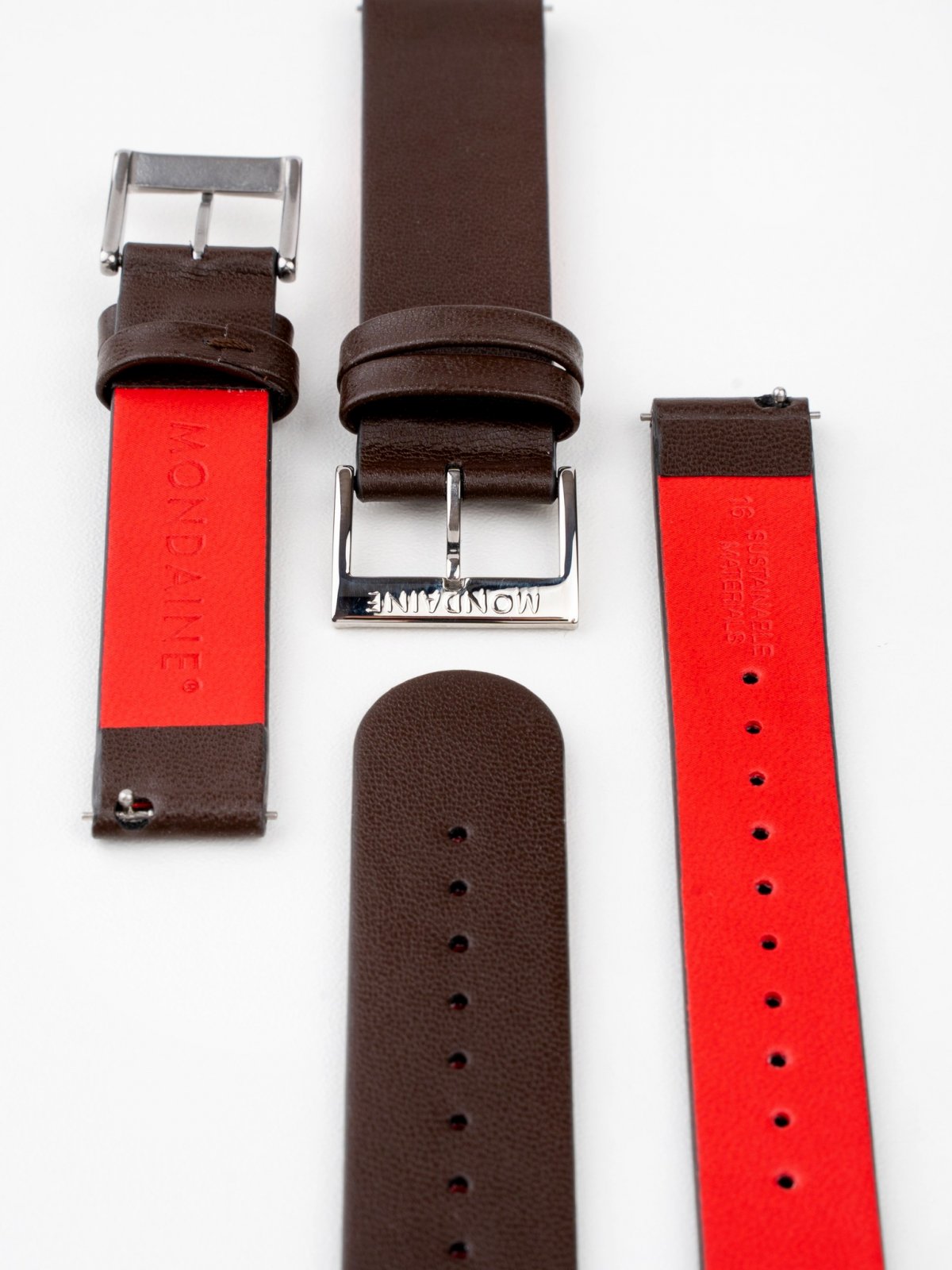

Mondaine has tested all kinds of fibers in the past, from bamboo to hemp, and from banana to pineapple. Watch straps made of grape marc outperformed animal leather in durability tests. The byproduct of winemaking is infinitely more sustainable than animal-based leather, a fact that Mondaine Watch co-owner Ronnie Bernheim comments with a wink: “Our findings are a reason to drink more Italian wine.”
♻️ Watch recycling (you heard right, that’s no mistake!)
You would think that a timepiece has no expiration date. Naturally, the battery and straps are infinitely replaceable. But the reality is that we live in a fast-paced world where consumer trends change at an ever-faster pace.
Mondaine Watch realizes this and might as well be the world’s first watchmaker to think about watch recycling. What happens to a wristwatch at the end of its life? In 2019, Mondaine started a free mail-in service for watch recycling. Remarkably, this service covers not only Mondaine models but also metal watches from other brands. At the factory, each watch is expertly broken down into individual parts with the goal of reusing, recycling or disposing of them.
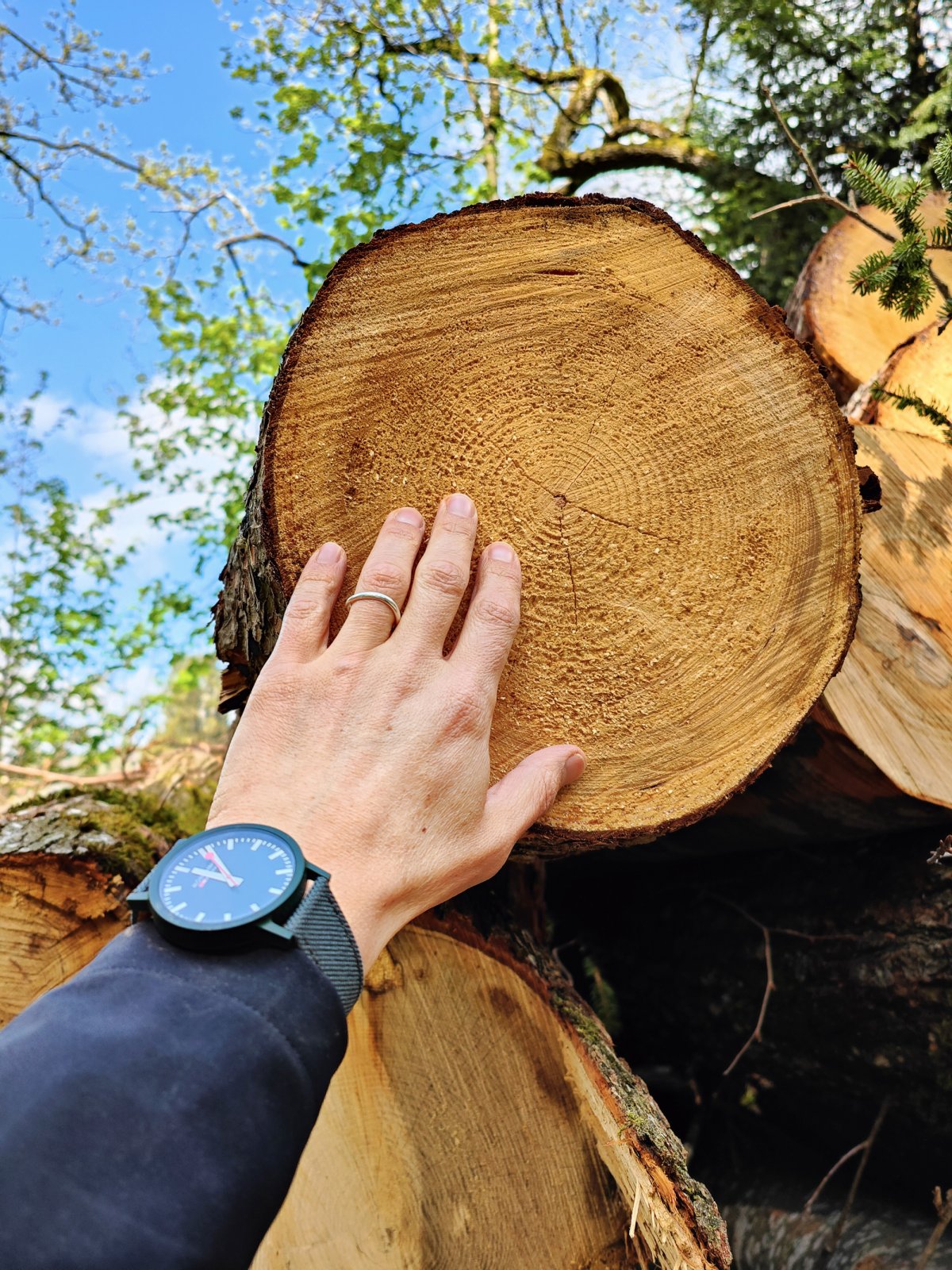
More information about sustainability at Mondaine Watch.





Add comment